Introduction
Jeep XJ is a popular off-road vehicle known for its ruggedness and durability. However, like any other vehicle, it can experience problems, such as not starting despite having power. This issue can be frustrating and confusing, especially for Jeep XJ owners who rely on their vehicles for adventurous trips.
In this article, we will discuss the common reasons why a Jeep XJ won’t start but has power and provide a step-by-step troubleshooting guide to help you fix the issue. We will also answer some frequently asked questions about this problem to give you a comprehensive understanding of the issue.
Possible Causes of the Problem
When you turn the key in your Jeep XJ and nothing happens, it can be frustrating and even scary. However, if you still have power to your lights, radio, and other electrical components, it means that the issue may not be related to the battery. Here are some possible causes of the problem and solutions to help you diagnose and fix the issue.
Dead Battery terminals
Signs of the problem: When you turn the key, you hear a clicking noise, and the engine doesn’t turn over. Also, your headlights may dim when you try to start the vehicle.
Possible reasons for the failure: Battery failure can occur due to various reasons, such as old age, leaving lights on, parasitic draw, or corrosion.
How to diagnose and fix the problem: You can check the battery’s voltage using a multimeter or a voltmeter. If the voltage is below 12.2 volts, it means that your battery needs to be charged or replaced. To fix the problem, try jump-starting the car or replacing the battery.
Faulty Starter motor
Signs of the problem: When you turn the key, you hear a grinding noise, and the engine doesn’t turn over. Sometimes, you may hear a whirring noise.
Possible reasons for the failure: Starter failure can occur due to various reasons, such as worn-out bearings, broken gear, or a malfunctioning solenoid.
How to diagnose and fix the problem: You can check the starter’s connections and cables for corrosion or looseness. Also, you can try tapping the starter with a hammer to see if it starts. If it doesn’t work, you may need to replace the starter.
Ignition Switch Failure
Signs of the problem: When you turn the key, nothing happens, and you don’t hear any noise. Also, your accessories, such as the radio and lights, may not work.
Possible reasons for the failure: Ignition switch failure can occur due to various reasons, such as worn-out contacts, a broken spring, or a malfunctioning lock cylinder.
How to diagnose and fix the problem: You can try wiggling the key or turning it slightly to see if the engine starts. Also, you can check the switch’s wiring and connections. If the problem persists, you may need to replace the ignition switch.
Fuel System Problems
Signs of the problem: When you turn the key, the engine cranks but doesn’t start. Also, you may notice a strong smell of gasoline.
Possible reasons for the failure: Fuel system problems can occur due to various reasons, such as a clogged fuel filter, a failing fuel pump, or a faulty fuel pressure regulator.
How to diagnose and fix the problem: You can check the fuel pressure using a fuel pressure gauge. If the pressure is low, it means that your fuel pump is failing or your fuel filter is clogged. You can try replacing the filter or pump to fix the problem.
Failing Starter relay
Signs of the problem: The starter is not cranking the engine, and you hear a high-pitched screeching sound.
Possible reasons for the failure: Failing starters often occur because of a worn-out armature or gears that can’t engage with the flywheel.
How to diagnose and fix the problem: You can analyse a failing starter by checking the voltage of the battery and the solenoid. A professional mechanic should replace a failing starter.
What Takes Place When You Insert Your Key Into The Ignition
Signs of the problem: Your Jeep XJ doesn’t start when you turn the key.
Possible reasons for the failure: The issue may be caused by a range of problems, such as a worn-out ignition key, a malfunctioning ignition cylinder, or a weak key fob battery.
How to diagnose and fix the problem: To diagnose the issue, try using a spare key or testing the battery in your key fob. If the issue persists, you may need to replace the ignition cylinder or have it repaired by a professional mechanic.
Bad Starter Solenoid
Signs of the problem: When you turn the key, you hear a clicking sound, but the engine doesn’t start.
Possible reasons for the failure: The starter solenoid can fail due to corrosion, worn-out contacts, or a malfunctioning relay.
How to diagnose and fix the problem: You can test the solenoid using a voltmeter or a multimeter to check for continuity. If the solenoid is defective, it needs to be replaced by a professional mechanic.
Faulty Spark Plugs
Signs of the problem: The engine cranks but doesn’t start, and you may notice a smell of gasoline.
Possible reasons for the failure: Spark plugs can fail due to worn-out electrodes, a malfunctioning ignition coil, or oil contamination.
How to diagnose and fix the problem: You can remove the spark plugs and check for signs of damage or wear. You can also test the ignition coil using a multimeter. If the issue persists, you may need to replace the spark plugs or have them cleaned.
Failing Alternator
Signs of the problem: The battery warning light is on, and the engine is making a grinding or whining noise.
Possible reasons for the failure: Alternators can fail due to a broken belt, a faulty regulator, or worn-out bearings.
How to diagnose and fix the problem: You can test the alternator using a multimeter to check for voltage output. If the alternator is not working correctly, you may need to replace it.
Clogged Fuel Filter or clogged Fuel Lines
Signs of the problem: The engine cranks but doesn’t start, and you may notice a lack of power or poor acceleration.
Possible reasons for the failure: Fuel filters and lines can become clogged due to dirt or debris, leading to restricted fuel flow.
How to diagnose and fix the problem: You can check the fuel filter for signs of clogging or replace it if necessary. You can also clean the fuel lines or have them replaced by a professional mechanic.
Corroded Battery Terminals
Signs of the problem: When you turn the key, the engine doesn’t start, and the battery connections are corroded or loose.
Possible reasons for the failure: Battery terminals can become corroded due to exposure to moisture or oxidation.
How to diagnose and fix the problem: You can clean the battery terminals using a wire brush or replace them if necessary. Make sure the connections are tight and secure.
Faulty Ignition Switch
Signs of the problem: When you turn the key, the engine doesn’t start, and you notice a burning smell or smoke.
Possible reasons for the failure: The ignition switch can fail due to a short circuit or electrical overload.
How to diagnose and fix the problem: You can test the ignition switch using a multimeter to check for continuity. If the switch is defective, it needs to be replaced by a professional mechanic.
In conclusion, if your Jeep XJ won’t start but has power, there could be several causes. Diagnosing the problem can be challenging, but by understanding the signs of each issue and following the suggested solutions, you can fix the problem and get your Jeep back on the road. Always take safety precautions when diagnosing and repairing your vehicle and consult a professional mechanic if necessary.
Possible Solutions to the Problem
Now that you have a good understanding of the possible causes of why your Jeep XJ won’t start but has power, it’s time to discuss the solutions to the problem. In this section, we’ll explore DIY solutions that you can try before seeking professional help, as well as professional solutions that may be necessary for certain situations.
DIY Solutions
Fixing Dead Battery terminals
If the battery is the issue, the best solution is to recharge or replace it. To recharge the battery, connect it to a battery charger overnight. If you opt for a replacement, make sure you get a battery with the same voltage and amperage rating as the original.
Fixing Faulty Starter
If you suspect a faulty starter, try tapping it gently with a hammer or a wrench while someone turns the key in the ignition. If the vehicle starts, the starter is likely the culprit. In this case, you may need to replace the starter.
Fixing Ignition Switch Failure
If the ignition switch is the problem, you can try spraying the electrical contact cleaner into the keyhole and then inserting and removing the key several times. If that doesn’t work, you may need to replace the ignition switch.
Fixing Fuel System Problems
If there’s an issue with the fuel system, such as a clogged fuel filter or fuel lines, you can replace these components yourself. Alternatively, you can try adding a fuel system cleaner to the gas tank and running the vehicle for a while to see if that helps.
Fixing Corroded Battery Terminals
If the battery terminals are corroded, you can clean them with a wire brush and baking soda. First, disconnect the battery cables, then mix a tablespoon of baking soda with a cup of water. Dip the wire brush into the solution and scrub the terminals until the corrosion is removed.
Fixing Failing Starter
If the starter is failing, you can try cleaning the connections and wiring leading to it. If that doesn’t work, you may need to replace the starter.
Fixing Bad Starter Solenoid
If the starter solenoid is the problem, you can try replacing it yourself. Disconnect the battery cables, remove the starter solenoid, and install the new one.
Fixing Faulty Spark Plugs
If the spark plugs are the problem, you can replace them yourself. First, remove the old spark plugs using a spark plug socket, then install the new ones and tighten them securely.
Fixing Failing Alternator
If the alternator is failing, you may need to replace it. However, before doing so, you can have it tested at an auto parts store to confirm that it’s the issue.
Fixing Clogged Fuel Filters or clogged Fuel Lines
If the fuel filter or fuel lines are clogged, you can replace them yourself. First, locate the filter or lines, then disconnect them and install the new ones.
Professional Solutions
When to seek professional help: If you have attempted the DIY solutions listed above and your Jeep XJ still won’t start, it may be time to seek professional help. Additionally, if you are uncomfortable performing any of the repairs yourself or lack the necessary tools and equipment, it’s best to leave it to the experts.
How to choose the right mechanic: Choosing the right mechanic is crucial when it comes to fixing your Jeep XJ. Here are some tips to help you find the right mechanic:
Look for a mechanic who is experienced in working with Jeep XJs specifically.
Check their credentials and certifications to ensure they have the necessary qualifications.
Read reviews from previous customers to gauge their level of expertise and customer service.
Get quotes from multiple mechanics to compare prices and ensure you are getting a fair deal.
Trust your gut and choose a mechanic who you feel comfortable communicating with and who is transparent about the repairs they will be making.
A Jeep XJ that won’t start but has power can be a frustrating and confusing problem to troubleshoot. By understanding the possible causes and solutions outlined in this article, you can confidently diagnose and fix the issue yourself or seek professional help if needed. Remember to always prioritize safety and take the necessary precautions when working on your vehicle.
Preventive Measures
Preventing a Jeep XJ from not starting is essential in avoiding future frustrations and unexpected breakdowns. Here are some preventive measures you can take:
Regular Maintenance
Regular maintenance is crucial in keeping your Jeep XJ running smoothly. Follow the manufacturer’s recommended maintenance schedule and perform routine checks such as oil changes, tire rotations, and brake inspections. Regular maintenance can prevent issues that can lead to a Jeep XJ that won’t start.
Inspection and Diagnosis
Regular inspections can help identify issues before they become major problems. If you notice any signs of a problem, such as difficulty in starting, strange noises, or warning lights, have your Jeep XJ inspected and diagnosed by a professional. Early detection can prevent a minor issue from becoming a major one.
Upgrades and Modifications
Upgrades and modifications can enhance the performance of your Jeep XJ and prevent issues that can cause a Jeep XJ not to start. Some upgrades to consider include a high-performance battery, a high-output alternator, and an upgraded ignition system. Make sure to research and consult with professionals before making any upgrades or modifications to ensure they are appropriate for your vehicle.
By understanding the possible causes and solutions, you can troubleshoot and fix the problem. Preventive measures such as regular maintenance, inspection and diagnosis, and upgrades and modifications can help prevent future issues and keep your Jeep XJ running smoothly. Remember to prioritize safety and seek professional help if needed.
Conclusion
In summary, a Jeep XJ that won’t start but has power can be caused by various issues such as a dead battery, faulty starter, ignition switch failure, fuel system problems, bad starter solenoid, corroded battery terminals, faulty ignition switch, and others. However, by understanding the possible causes and solutions, you can troubleshoot and fix the problem. Preventive measures such as regular maintenance, inspection and diagnosis, and upgrades and modifications can help prevent future issues and keep your Jeep XJ running smoothly.
Final thoughts and recommendations
Dealing with a Jeep XJ that won’t start can be frustrating, but with the right knowledge and approach, you can solve the problem. It’s essential to prioritize safety and seek professional help when needed. Regular maintenance, inspections, and upgrades can also prevent future issues and save you time and money in the long run. Remember to take care of your Jeep XJ and address any problems promptly to keep it running smoothly.
FAQs
Can a faulty ignition switch cause a Jeep XJ not to start?
Yes, a faulty ignition switch can prevent your Jeep XJ from starting.
Can I fix a dead battery myself?
Yes, you can fix a dead battery yourself by jump-starting or replacing it. However, if you’re not comfortable doing it yourself, seek professional help.
What is the best way to choose a mechanic?
When choosing a mechanic, look for one with experience working on Jeep XJ’s, certifications, and positive reviews from previous customers. Don’t hesitate to ask for referrals and check their prices and warranties.
How often should I perform maintenance on my Jeep XJ?
It’s recommended to follow the manufacturer’s recommended maintenance schedule and perform routine checks such as oil changes, tire rotations, and brake inspections every 3,000 to 7,500 miles.
Can upgrades and modifications improve my Jeep XJ’s performance?
Yes, upgrades and modifications such as a high-performance battery, a high-output alternator, and an upgraded ignition system can enhance your Jeep XJ’s performance and prevent issues that can cause a Jeep XJ not to start. However, make sure to research and consult with professionals before making any upgrades or modifications.



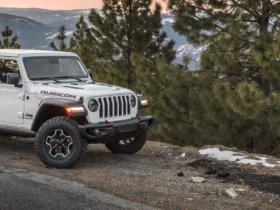
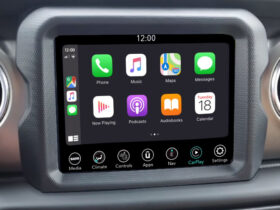

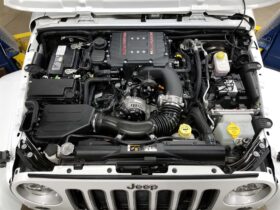
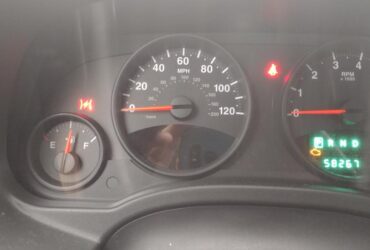
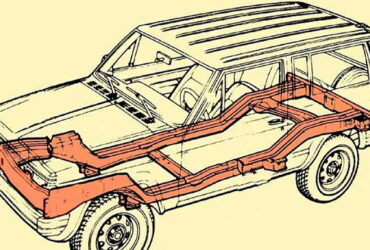
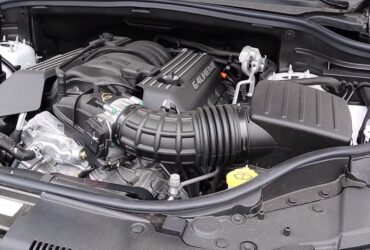

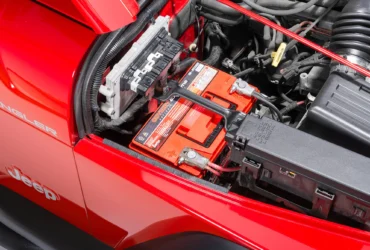

Leave a Reply